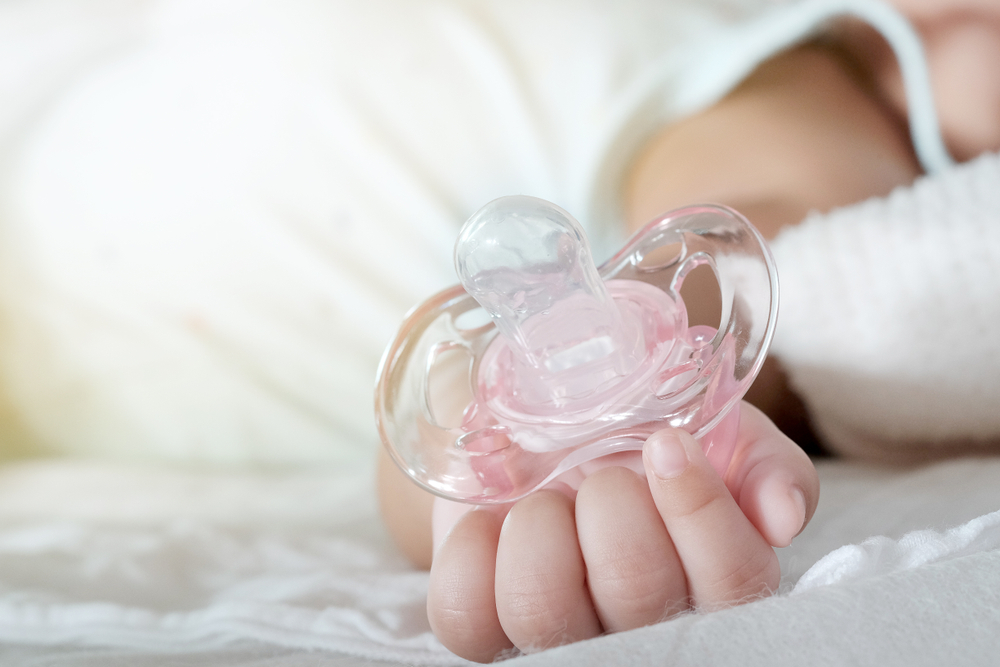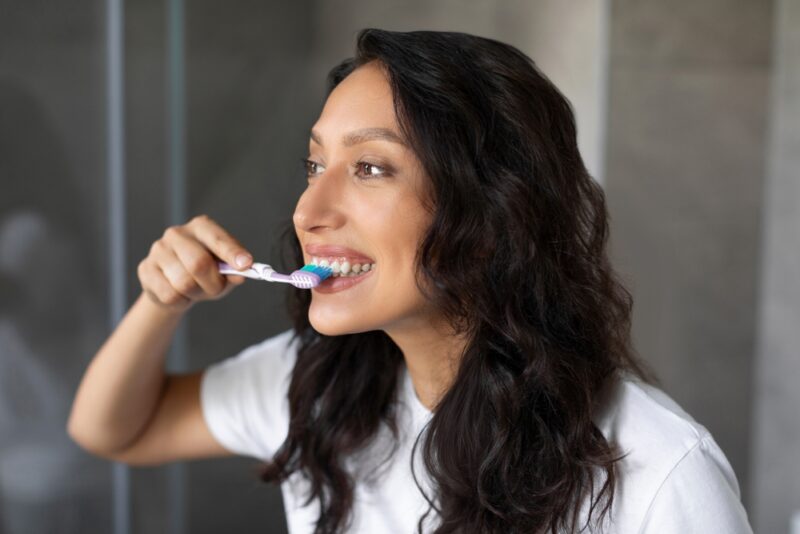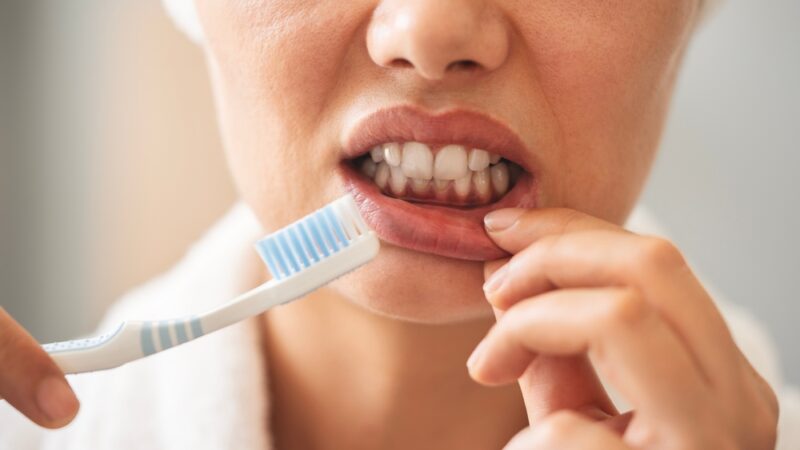If you’re wondering about the link between pacifiers and orthodontic problems, Aloe Dental Wellness is here to explain the link.
What Orthodontic Issues Can Pacifiers Cause?
Infants often find comfort in pacifiers, which offer soothing relief and a feeling of security. Nevertheless, it is crucial for parents to grasp the potential effects of pacifier usage on their child’s orthodontic well-being. This blog post delves into the connection between pacifiers and orthodontic concerns, revealing the lasting implications and providing recommendations for responsible pacifier usage.
Prolonged use of pacifiers has the potential to contribute to various orthodontic problems in children. Although not all pacifier users will encounter these issues, it is important to be aware of the potential risks below.
1. Malocclusions: Malocclusions refer to misalignments of the teeth and/or jaws. Prolonged pacifier use, particularly beyond the age of three, can lead to dental malocclusions like open bites (a gap between the upper and lower front teeth when the jaws are closed), overbites (excessive protrusion of upper front teeth over the lower teeth), or crossbites (upper teeth biting inside the lower teeth).
2. Dental Arch Development Issues: The continuous pressure exerted by pacifiers can interfere with the natural growth and development of dental arches, affecting the eruption and alignment of teeth. This can result in narrow dental arches, crowded teeth, or improper tooth positioning.
3. Changes to the Palate: Long-term pacifier use can influence the shape and size of the palate (roof of the mouth). Extended pacifier use may contribute to a high, narrow palate, which can impact speech development and proper occlusion (alignment of upper and lower teeth).
4. Thumb Sucking Habits: While not directly related to pacifier use, it is worth mentioning that pacifier users may be more prone to developing thumb-sucking habits. Prolonged thumb-sucking can also lead to orthodontic problems such as misaligned teeth and changes in jaw position.
It is important to note that the severity and likelihood of these orthodontic problems can vary among individuals. Some children may only experience mild issues that can self-correct over time, while others may require orthodontic intervention for more significant concerns. Regular dental check-ups with a pediatric dentist can help monitor your child’s dental development and identify any emerging orthodontic issues.
Certain risk factors, such as the intensity and duration of pacifier use, can increase the likelihood of orthodontic problems. Moreover, the timing of pacifier use is crucial. Gradual weaning from pacifiers at the appropriate age can help minimize the risk of developing orthodontic issues.
Tips For Pacifier Use
Although pacifiers can increase the risk of orthodontic problems, they also offer several benefits, including promoting self-soothing in babies, aiding in weaning, and reducing the risk of SIDS. As a result, many parents choose to allow their children to use pacifiers. Fortunately, there are ways to maximize the advantages of pacifiers while minimizing the potential orthodontic risks.
- Introduce the pacifier at the appropriate time: Wait until breastfeeding is well-established before introducing a pacifier. This reduces the risk of nipple confusion and ensures that your baby’s feeding needs are adequately met.
- Choose the right pacifier: Opt for an orthodontically designed pacifier that promotes proper oral development. Look for pacifiers with a symmetrical shape and a shield larger than your baby’s mouth to prevent choking hazards.
- Limit pacifier use to sleep and soothing: Reserve pacifier use for sleep times and when your baby needs comforting. Avoid using the pacifier as a constant soothing tool throughout the day to minimize the duration of pacifier use.
- Encourage self-soothing alternatives: Introduce other self-soothing techniques, such as swaddling, gentle rocking, or offering a soft blanket or toy, to help your child transition away from pacifiers.
- Practice good hygiene: Regularly clean and sterilize pacifiers to prevent the accumulation of harmful bacteria. Follow the manufacturer’s instructions for cleaning or consider using dishwasher-safe pacifiers for convenience.
- Consult with a pediatric dentist: Regularly visit a pediatric dentist who can monitor your child’s oral health, provide guidance on pacifier use, and address any concerns or questions you may have.
When To Stop Pacifier Use
Determining the “appropriate” age to wean a child off a pacifier can yield conflicting recommendations. The American Academy of Pediatrics and the American Academy of Family Physicians suggest weaning children off pacifiers as early as 6-12 months to reduce the risk of ear infections. Furthermore, the AAP states that pacifier use after 2 years of age can lead to dental issues, although these problems are usually reversible if pacifier use ceases before the adult teeth emerge. The American Academy of Pediatric Dentistry recommends discontinuing pacifier use by 3 years of age. In general, it is advised that children no longer use pacifiers once they reach 4 years old.
The appropriate age for pacifier weaning varies based on a child’s unique development and requirements. Throughout the weaning process, it is crucial to recognize that each child is different, and some may require more time and patience to completely transition away from pacifiers. Consistency and patience are key during this process, providing comfort and reassurance to your child as they adjust. Consulting with a pediatric dentist or healthcare professional is also recommended, as they can assess your child’s specific needs and offer tailored guidance. They can provide additional advice and strategies to facilitate a smooth pacifier weaning process.
Choose Aloe Dental Wellness For All Your Dentistry Needs
At Aloe Dental Wellness, you can expect the very best in dental care with Dr. Daniela Cadavid. Dr. Cadavid is glad to offer a brand-new office equipped with the latest technology and services in both English and Spanish to UCSB students and staff, as well as the surrounding communities. Aloe Dental Wellness in Santa Barbara County is proud to provide general, cosmetic, and emergency dentistry services to meet the needs of your entire family as well. For an appointment, call us at 805-454-7727 today.




